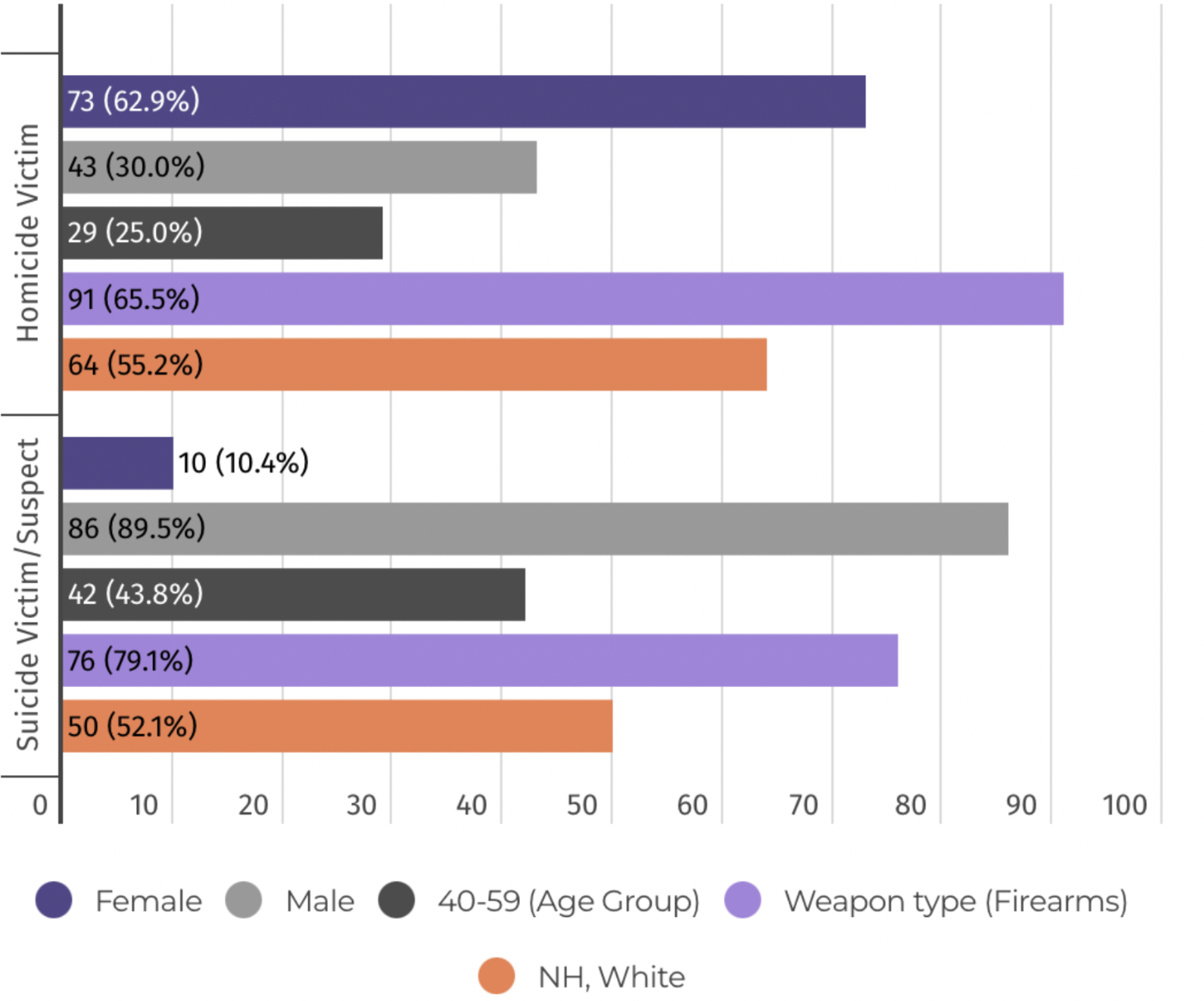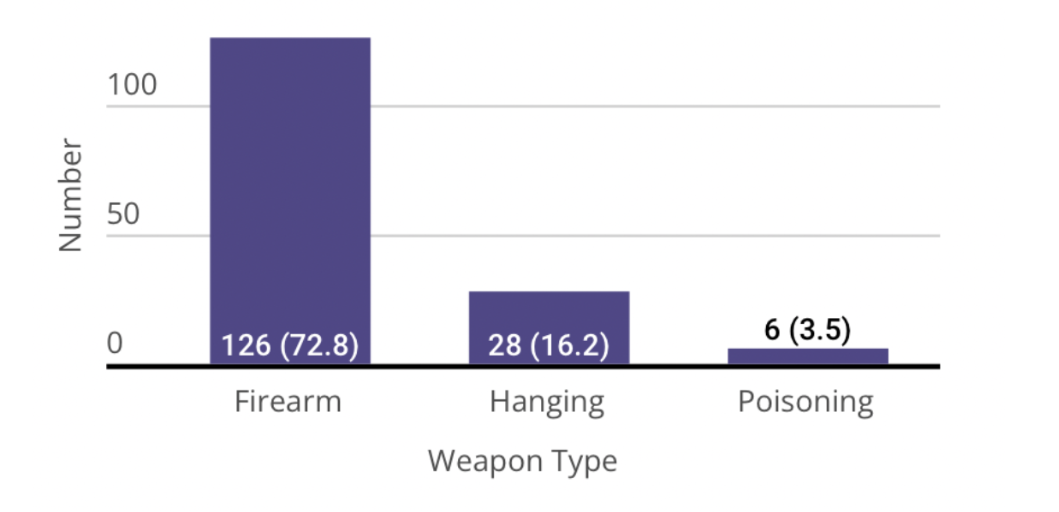Unveiling the Impact of Firearms in Illinois: Insights from the IVDRS
By: Elizabeth Casolo
The Illinois Violent Death Reporting System (IVDRS) under the Buehler Center for Health Policy and Economics tracks violent deaths across the state and adds nuance to the bigger picture. Through analysis of suicides and homicide-suicides in Illinois, the IVDRS team confirmed a high prevalence of firearms in these cases. Let’s explore what this means in context.
Understanding the Uptick in Death by Suicide Rates Among Older Adults and the Role of Firearms
Suicide in the U.S. rose between 2021 and 2022, despite a decline in youth suicide deaths. While many may attribute the country’s mental health crisis to young people, older adults (over the age of 45) had the greatest percent increase in-suicide deaths over this period. As Americans’ struggling mental health status persists, policymakers need to consider the why and how behind these deaths. Firearms, in particular, are at the center of “the how” discourse, and data can depict the dangers of firearms in a mental health crisis.
A Closer Look at Policy Frameworks
Federal law restricts firearm access for those who have been found to be a danger to themselves or others. However, there are no federal laws mandating state reporting of these individuals to the National Instant Criminal Background Check System (NICS). Illinois, however, does work with the FBI to relay this information, and other state laws require certain professionals to report individuals, as well.
In Illinois, individuals must waive their confidentiality rights in regard to their mental health information when applying for a FOID card, a required document to possess a firearm. The only mental health information reviewed is whether a person was previously a patient in a mental health institution, along with any information provided by reporting professionals.
Illinois police can also revoke or deny FOID cards to abusers and those who violate orders of protection, a significant issue in homicide-suicide cases.
Understanding the Role of Firearms
From 2015 through 2020, IVDRS tracked weapons used in homicide-suicide cases throughout the state. IVDRS focused on 96 suicide victims/suspects in homicide-suicide cases, meaning the homicide suspect died by suicide within 24 hours. An overwhelming 79.1% of tracked suicide victims/suspects died due to firearm use, making firearms the most common weapon related to these deaths. Over 43% of suicide victims/suspects were in their 40s and 50s, as well, making this age group the largest demographic. Nearly nine out of 10 suicide victims/suspects were men.

IVDRS also reviewed the state’s veteran suicides in 2021. Following a similar pattern, 72.8% of deaths included firearm use.

The consistent presence of firearms in Illinois suicide cases suggests a greater need to focus on mental health of older adults, especially as they have greater access to firearms than youth (in Illinois, the minimum age to buy or possess a handgun or long gun is 21) and struggle with mental health more each year.
Antigone Kouvelis, senior program administrator for IVDRS, worked closely on this data. She confirmed the persistent presence of firearms in suicide cases, including and beyond homicide-suicide incidents. Kouvelis also noted the commonality of protective orders in homicide-suicide cases.
“Many of these homicide-suicide events did have orders of protection,” Kouvelis said when considering which patterns would be important for policymakers to address. “These deaths are preventable.”
Accessing Support and Resources
If you or someone you know is in distress, the 988 Suicide & Crisis Lifeline is a free, confidential support resource available 24 hours a day, seven days a week.
The Giffords Law Center provides detailed, state-by-state information on firearm policy across the country.
There are a series of domestic violence resources throughout Illinois. The Illinois Department of Human Services can assist with survivor safety, counseling and more.